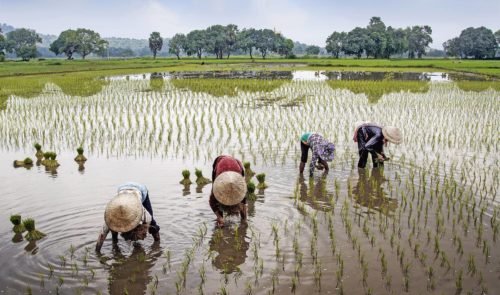
Algorithms developed in Cambridge for automatically recognising people by their iris patterns are the basis of all publicly deployed iris recognition systems across the world.
IrisCode was developed by John Daugman to provide an automatic and rapid method for determining a person’s identity with very high confidence through mathematical analysis of the random patterns visible in the iris. No such method existed previously, nor has any equally robust method been discovered elsewhere. The development is based on Daugman’s research, which bridges computer vision, artificial intelligence and statistical pattern recognition, and included crucial work on the statistics of iris patterns and their analysis by information theory.
Since August 2013, 800 million people have been enrolled onto iris pattern databases based on using his analysis and encoding methods, with wide-reaching economic and social impact. The technology has increased the accuracy and security of access and registration systems at hospitals, airports and schools. It has made aid and food distribution to refugees fairer, faster and more efficient. And it has improved access to previously inaccessible benefits and services through biometric national identity programmes.
For instance, in 2015, the United Nations High Commissioner for Refugees completed its registration of nearly 110,000 Myanmar refugees in Thailand’s border camps using a new Biometrics Identity Management System.
In 2017, the World Food Programme (WFP) ‘Building Blocks’ programme was developed, combining iris authentication technology with blockchain as a means of making regular cash transfers simpler, more efficient and more resistant to fraud. It was deployed in Jordan at the King Abdullah Park, Azraq and Zaatari Refugee Camps, where more than 100,000 Syrian refugees can pay for food in camp supermarkets with only a quick scan of their iris, and without the need for additional cards or identification checks. Since 2018, the WFP has also deployed iris recognition in its refugee food distribution system in Uganda, where refugees can have their family’s monthly food allowance from WFP verified biometrically in less than a minute.
In India, the biometric national identity programme Aadhaar was established by the Unique IDentification Authority of India (UIDAI). It uses biometrics, including two IrisCodes to validate identities and to exclude duplicates. By 2019, 1.2 billion had been enrolled in UIDAI, covering 90% of the adult population.
“When my eyes and card are scanned, my photo comes up on the screen. I know it’s fair because WFP [World Food Programme] will give food to the right person …[before] it was always a fight and a scramble – a real challenge when I had my baby on my back. It is now a lot less hectic.”
– Burundian refugee in Oruchinga Refugee Camp, Uganda

